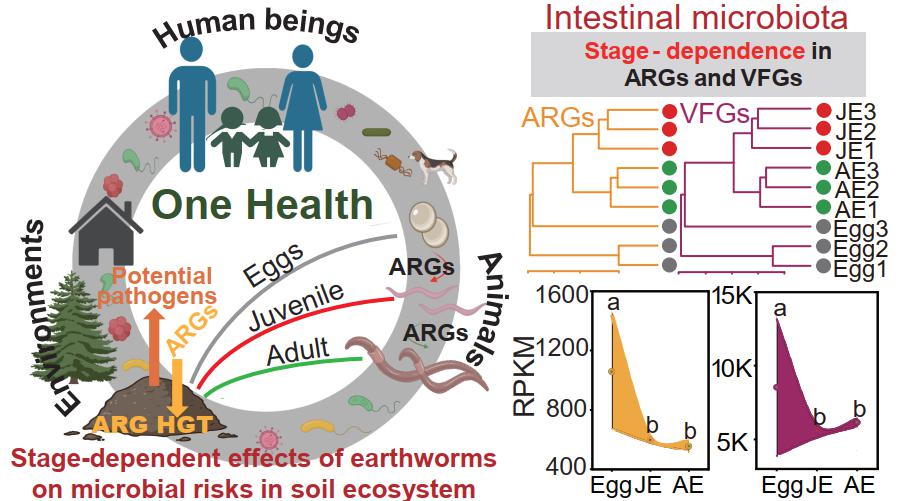

Under the “One Health” framework, microbial resistance and pathogenicity across environments and animals pose significant health threats and have become a global issue. Although antibiotic resistance genes (ARGs) in earthworm guts and their influence on soil ARGs have been studied, how earthworm life stages affect ARGs and potential pathogens in the gut and soil remains unclear. Here, we assessed intestinal ARGs and virulence factor genes (VFGs) during earthworm development (egg, juvenile, and adult) and their influence on soil ARGs and potential pathogens. Our results showed that ARGs and potential pathogens were widespread and varied within earthworm guts at different growth stages. Earthworm guts harbored significantly (p < 0.05) fewer high-risk ARGs than soil, indicating potential roles of earthworms in soil ARG mitigation. Conversely, potential pathogens were significantly (p < 0.05) higher in guts than in soil. We further found that earthworms across life stages increased soil potential pathogens and reinforced ARG-mobile genetic element (MGE)-pathogen linkages in the soil ecosystem. ARG spread in earthworm guts relied more on vertical transmission than horizontal gene transfer (HGT). These results suggest that earthworms harbor abundant and diverse ARGs and potential pathogens, influencing soil microbiota and resistomes, which reveal earthworm-associated risks to soil ecosystem health.
